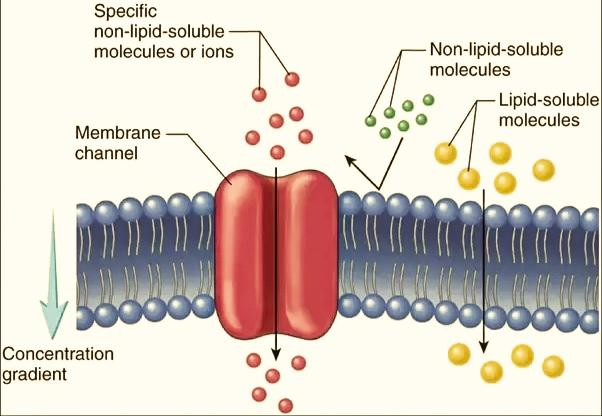
Why is the plasma membrane called a selectively permeable membrane?
Answer
553.5k+ views
1 likes
Hint: The membrane which protects cells from the outer environment.
Complete answer:
The plasma membrane is a biological membrane that separates the interior of all cells from the outside environment which protects the cell from its environment.
It is also called a cell membrane.
The cell membrane is made up of lipid bilayer, proteins, and cholesterol.
The plasma membrane is selectively permeable to ions and organic molecules and regulates the movement of substances in and out of cells. It makes sure that only selected particles enter inside the cell.
The structure of phospholipid bilayer prevents random things from entering through the membrane and proteins act like doors, letting the right particles in and out.
The selectively permeable membrane is important for the cell because if not then it may let in harmful substances.
Cell membranes are semipermeable which helps molecules to move through them.
The phospholipid bilayer in the cell membrane has a hydrolytic center which results in dissolving the molecules which are not capable of passing through the membrane.
Water passes through the cell membrane through osmosis while molecules of oxygen and carbon dioxide pass through the membrane by diffusion.
Significance of plasma membrane
- They keep toxic substances out of the cell.
- They allow specific molecules to enter the cell.
- It provides a fixed environment inside the cell.
- It transports nutrients inside the cell.

Note: The cell membranes are semipermeable because they keep the inside of the cell at low temperatures. The substances move from high concentration to low concentration concerning the concentration gradient.
Complete answer:
The plasma membrane is a biological membrane that separates the interior of all cells from the outside environment which protects the cell from its environment.
It is also called a cell membrane.
The cell membrane is made up of lipid bilayer, proteins, and cholesterol.
The plasma membrane is selectively permeable to ions and organic molecules and regulates the movement of substances in and out of cells. It makes sure that only selected particles enter inside the cell.
The structure of phospholipid bilayer prevents random things from entering through the membrane and proteins act like doors, letting the right particles in and out.
The selectively permeable membrane is important for the cell because if not then it may let in harmful substances.
Cell membranes are semipermeable which helps molecules to move through them.
The phospholipid bilayer in the cell membrane has a hydrolytic center which results in dissolving the molecules which are not capable of passing through the membrane.
Water passes through the cell membrane through osmosis while molecules of oxygen and carbon dioxide pass through the membrane by diffusion.
Significance of plasma membrane
- They keep toxic substances out of the cell.
- They allow specific molecules to enter the cell.
- It provides a fixed environment inside the cell.
- It transports nutrients inside the cell.

Note: The cell membranes are semipermeable because they keep the inside of the cell at low temperatures. The substances move from high concentration to low concentration concerning the concentration gradient.
Recently Updated Pages
Master Class 11 Business Studies: Engaging Questions & Answers for Success

Master Class 11 Computer Science: Engaging Questions & Answers for Success

Master Class 11 Maths: Engaging Questions & Answers for Success

Master Class 8 Science: Engaging Questions & Answers for Success

Master Class 10 Computer Science: Engaging Questions & Answers for Success

Master Class 10 Social Science: Engaging Questions & Answers for Success

Trending doubts
1 ton equals to A 100 kg B 1000 kg C 10 kg D 10000 class 11 physics CBSE

Difference Between Prokaryotic Cells and Eukaryotic Cells

One Metric ton is equal to kg A 10000 B 1000 C 100 class 11 physics CBSE

What is the opposite of entropy class 11 chemistry CBSE

Proton was discovered by A Thomson B Rutherford C Chadwick class 11 chemistry CBSE

1 Quintal is equal to a 110 kg b 10 kg c 100kg d 1000 class 11 physics CBSE




